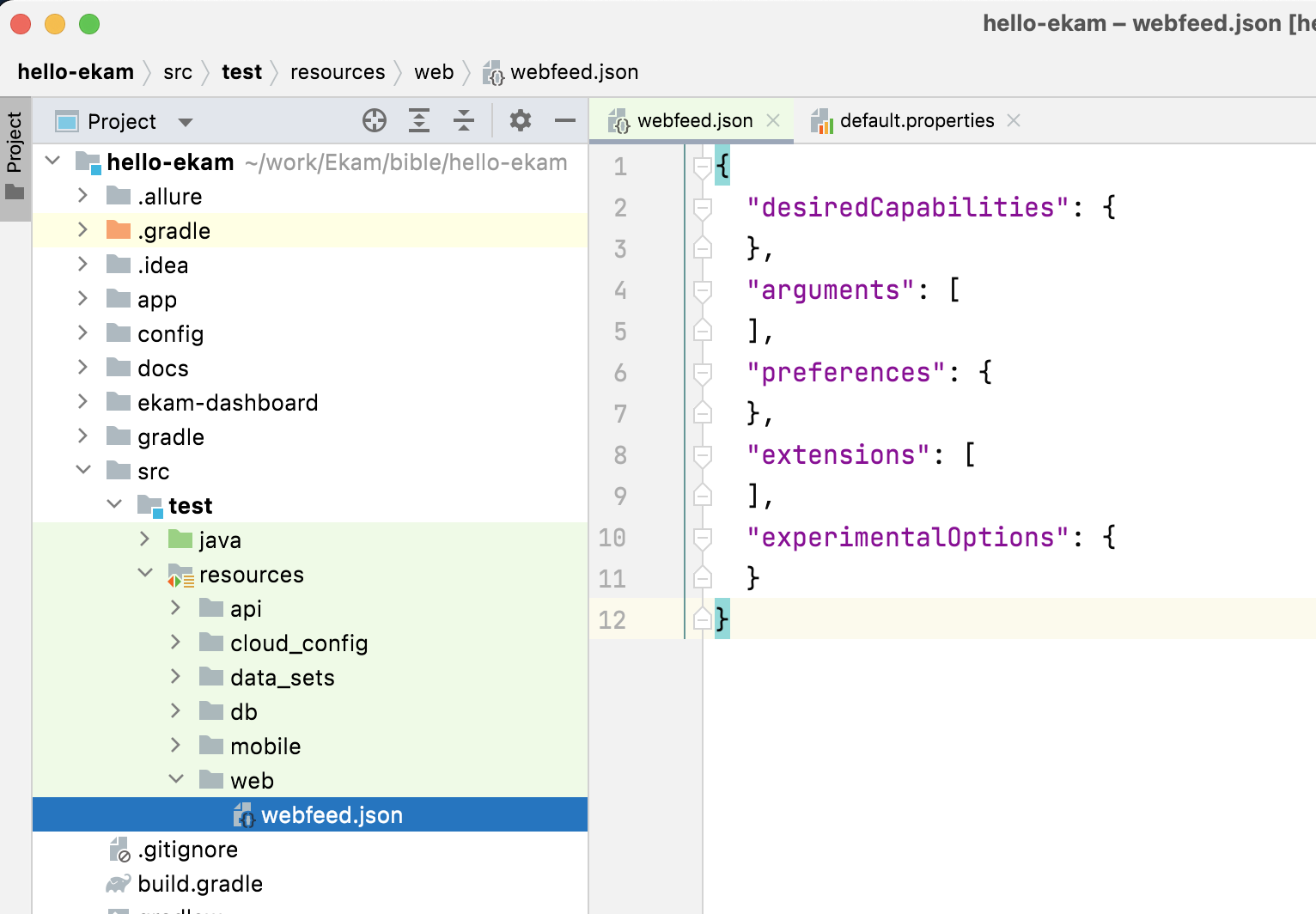Web Feed
Given that the WebDriver instance is completely managed by Ekam, you must be wondering where & how to provide options to supply while starting the driver instance
Web Feed
Web Feed is a template for creating WebDriver Instance with options specific to a browser.
desiredCapabilities: Read more about this here.
preferences: List of preferences like download directory. Refer to browser documentation for supported preferences.
extensions: List of extensions with their path (['/path/to/extension1', ‘/path/to/extension2’])
experimentalOptions: Experimental flags supported by the browser.
NOTE: You can create multiple WebFeeds like chrome.json, firefox.json, etc, or Use the same feed for all the browsers if a common configuration is used. Set property web.feed either in config or as system property to specify the WebFeed to be used.
Web Feed Location
src/test/resources/web/webfeed.json

Let’s give it a shot. Let’s execute the test in incognito & full-screen mode
Modify the webfeed.json as below specifying arguments “incognito” & “start-fullscreen:
{
"desiredCapabilities": {
},
"arguments": [
"incognito", "start-fullscreen"
],
"preferences": {
},
"extensions": [
],
"experimentalOptions": {
}
}
Once we have updated the webfeed.json, let’s ask our config to refer to it. In this case, we are using default.properties
The default.properties file would like this now:
# Web Config
# Web url of web application under test
web.url:http://google.com
# Feed file having desiredCapabilities, arguments etc
web.feed:webfeed
Execute test. The test would trigger in incognito mode & in fullscreen
